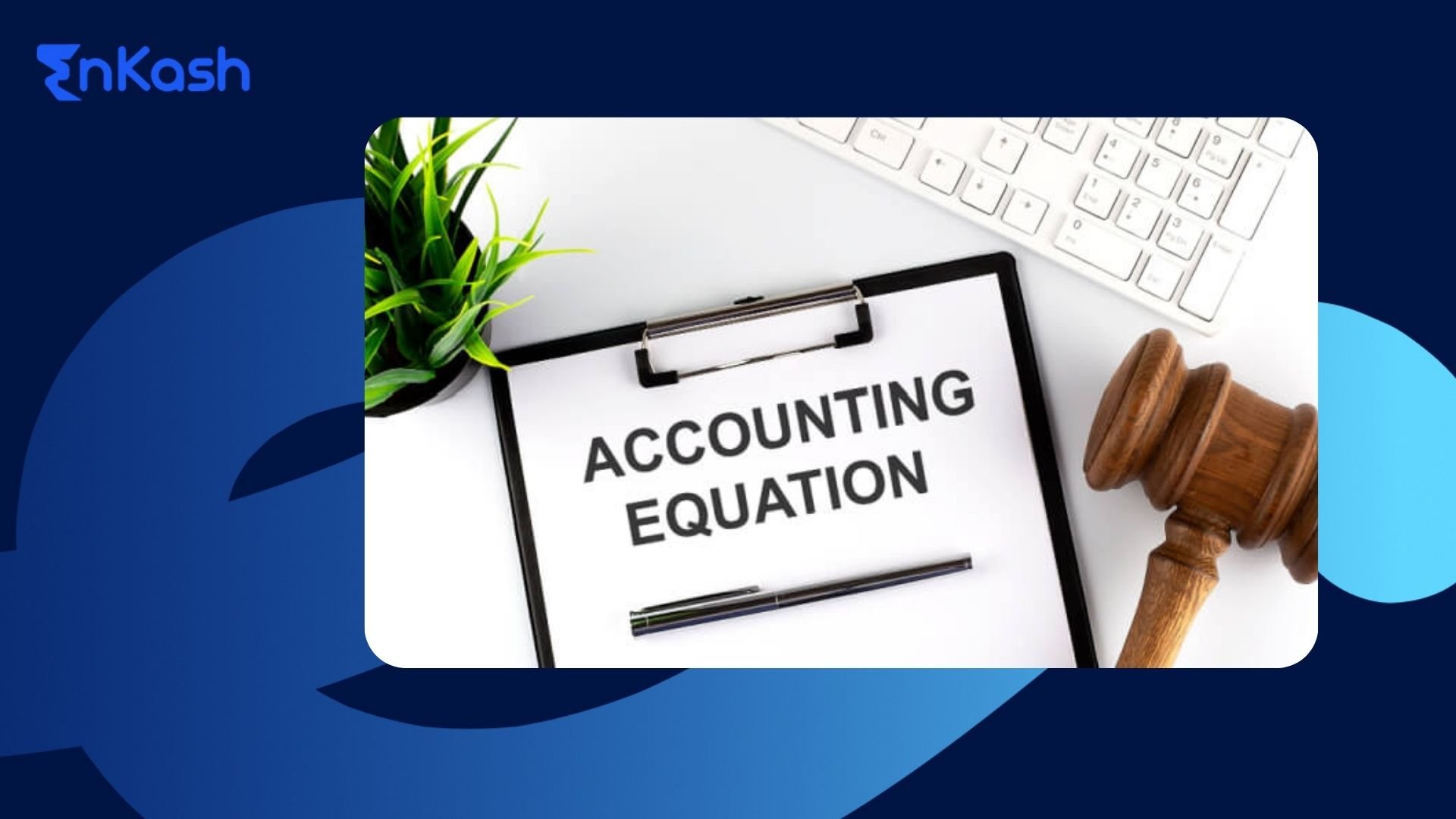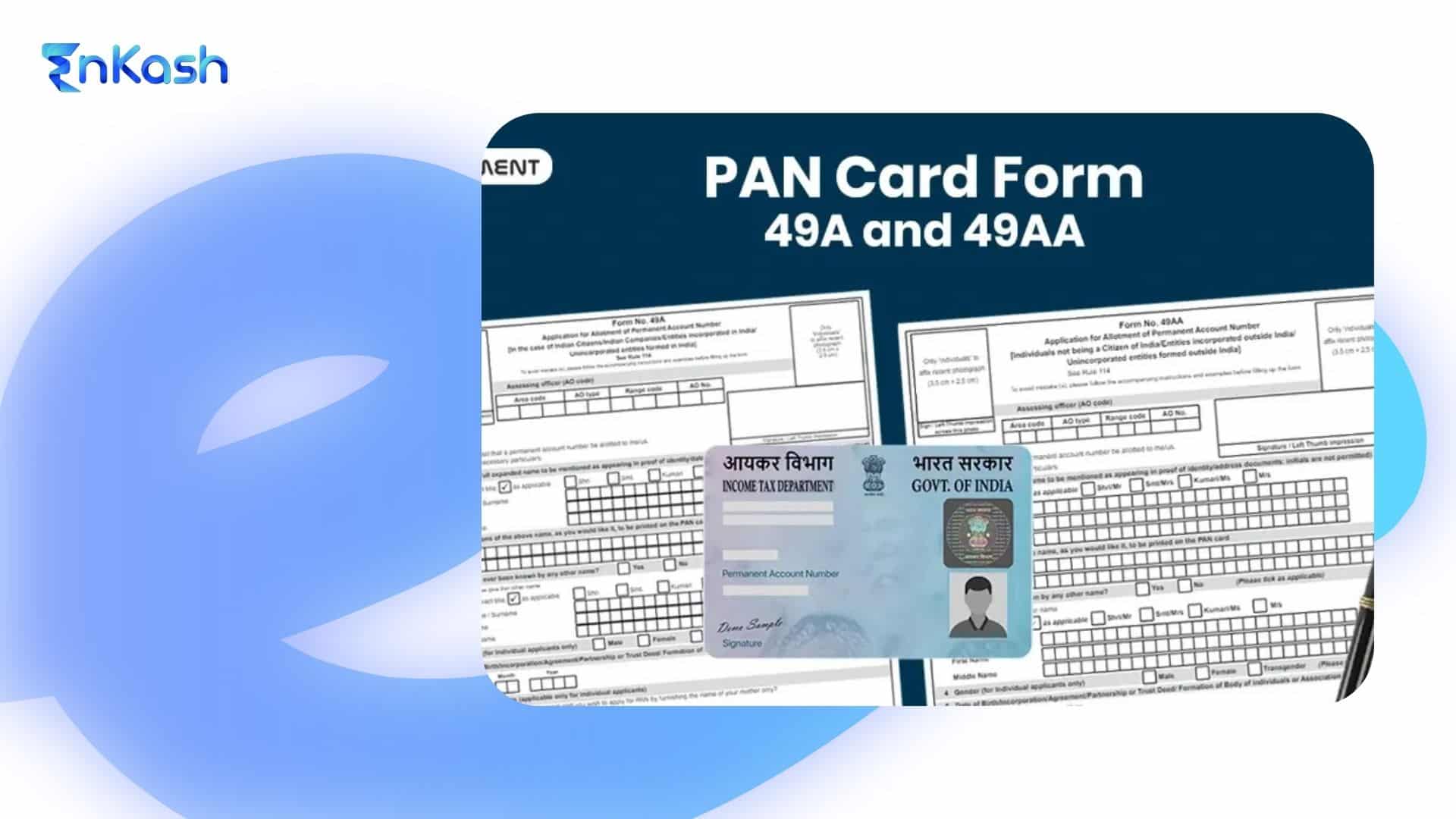Understanding the accounting equation is important for anyone learning accounting or running a business. For new business owners, it offers a simple but effective way to keep the books balanced.
In simple terms, the accounting equation is a fundamental principle of accounting. Everything your business owns is funded by either what it owes or the owner’s investment. This equation forms the foundation of the balance sheet and reflects the relationship between a company’s assets, liabilities, and equity.
Read on to explore the basics of the accounting equation and more.
What is the Accounting Equation?
The accounting equation is also called the basic accounting or balance sheet equation. It says a company’s total assets always equal the sum of its liabilities and shareholders’ (or owners’) equity.
Formula
Assets = Liabilities + Capital/Equity.
This equation is the base of the double-entry accounting system. It applies to every financial transaction in a company’s books. It shows that everything a business owns (assets) is funded either through borrowing (liabilities) or owner/shareholder investments (equity). This is why a balance sheet always balances. The left side (assets) always equals the right side (liabilities + equity).
While not a full measure of financial health, the accounting equation ensures that books are balanced and can indicate potential issues in record-keeping. If assets do not equal liabilities + equity, something is wrong in the records. Double-entry accounting requires every transaction to have two sides (debit and credit) that keep the equation balanced. For example, an increase in an asset will match an increase in a liability or equity, or a decrease in another asset. This built-in check makes the equation the foundation of bookkeeping.
Example: A company has ₹17,00,000 in assets. Its liabilities are ₹12,00,000. This means its equity is ₹5,00,000 to keep the equation balanced.
Assets (₹) |
Liabilities (₹) |
Equity (₹) |
|---|---|---|
₹17,00,000 |
₹12,00,000 |
₹5,00,000 |
This rule applies to every business, large or small. It ensures that every dollar of assets is matched by a dollar of debt or owner’s capital.
Read More: Financial Accounting: Definition, Types, Functions & Examples
Key Components: Assets, Liabilities, and Equity
To understand the accounting equation, you need to know its three parts. They are termed assets, liabilities, and equity.
Assets
Assets are things of value that your business owns or controls. It can include cash in hand or your business bank accounts, products in stock, equipment, machinery, etc.
Examples of assets:
- Cash and cash equivalents refer to money in bank accounts, short-term investments, and so on.
- Accounts receivable are money owed to you by customers for goods or services sold on credit.
- Inventory refers to products or materials ready to sell.
- Fixed assets are long-term items like machinery, computers, vehicles, or buildings.
Liabilities
Liabilities are the opposite of assets. They show what your business owes to other people or organizations. In short, liabilities are your debts and financial responsibilities.
Examples of liabilities:
- Loans and bonds payable are money borrowed from a bank or investors.
- Accounts payable include outstanding amounts owed to vendors or service providers. This can include supplier payments, utility bills, rent, and others.
- Accrued expenses refer to costs that have been incurred but not yet paid. This can include wages owed to employees.
- Other obligations can be taxes payable, credit card balances, or any other form of debt.
In accounting, all liabilities are added together as total liabilities.
Equity
Equity is the owner’s share of the business assets. It is what remains for the owners after all debts are paid.
So, Equity = Assets – Liabilities
If all assets were sold and debts cleared, the leftover money would go to the owners. This is why equity is often called the business’s net worth or book value.
The form of equity depends on the business type:
- Sole proprietorship or partnership: Here, equity is called owner’s capital or owners’ equity. It includes the money the owners first invested, plus reinvested profits, minus any withdrawals.
- Corporation: Here, equity is shareholders’ equity or stockholders’ equity. It includes share capital and retained earnings.
Equity grows when owners invest more or when the business makes a profit. It falls when owners withdraw money or when the business has losses. Equity is not the same as cash. You may have high equity tied up in assets like machinery or stock, but that value is not liquid cash.
Read More: Journal Entry Accounting Explained: Rules and Formats
The Relationship Between Assets, Liabilities, and Equity
Assets, liabilities, and equity are linked through the accounting equation.
The equation, as discussed, is:
- Equity = Assets – Liabilities
- Liabilities = Assets – Equity
- Assets = Liabilities + Equity
If you know any two of these, you can find the third. Business owners often use this as a quick check. If liabilities are higher than assets, equity is negative. This signals financial trouble.
The accounting equation is accepted worldwide. A balance sheet is simply the accounting equation in detail. One side lists assets, while the other lists liabilities and equity. The total of liabilities and equity always equals total assets.
If this sounds confusing, here is a simple example:
Suppose a company reports Total Assets of ₹17000000 and Total Liabilities of ₹12000000. Using the accounting equation, equity is ₹17000000 – ₹12000000 = ₹5000000.
If liabilities are ₹12000000 and equity is ₹5000000, together they total ₹17000000. Thus, the equation balances.
If liabilities were ₹12000000 and equity ₹4000000, the total would be ₹16000000. This does not match ₹17000000 assets, showing a ₹1000000 gap. In practice, this means there is an error because the equation must balance exactly.
Accounting formula also explains the layout of a balance sheet. Assets are shown on one side, and liabilities plus equity on the other. This format makes the equation clear.
Company Name
Balance Sheet
Date
| Assets | Liabilities & Equity | ||
|---|---|---|---|
| Current Assets | Current Liabilities | ||
| Cash & Bank Balances | ₹ 3,000,000 | Accounts Payable | ₹ 2,000,000 |
| Accounts Receivable | ₹ 2,500,000 | Short-Term Loans | ₹ 1,500,000 |
| Inventory | ₹ 1,500,000 | Accrued Expenses | ₹ 1,000,000 |
| Prepaid Expenses | ₹ 500,000 | Total Current Liabilities | ₹ 4,500,000 |
| Total Current Assets | ₹ 7,500,000 | ||
| Non-Current Assets | Non-Current Liabilities | ||
| Property, Plant & Equipment | ₹ 8,000,000 | Long-Term Loans | ₹ 7,500,000 |
| Intangible Assets | ₹ 1,500,000 | Total Non-Current Liabilities | ₹ 7,500,000 |
| Total Non-Current Assets | ₹ 9,500,000 | ||
| Total Assets | ₹ 17,000,000 | Total Liabilities | ₹ 12,000,000 |
| Equity | |||
| Owner’s Capital | ₹ 4,000,000 | ||
| Retained Earnings | ₹ 1,000,000 | ||
| Total Equity | ₹ 5,000,000 | Total Liabilities & Equity | ₹ 17,000,000 |
Many small businesses prepare balance sheets regularly to check accuracy. If the two sides do not match, it signals that some transactions are missing or recorded incorrectly. The balance sheet above uses double-entry accounting, which we will discuss next.
Read More: Bookkeeping vs. Accounting: Key Differences Every Business Should Know
How the Accounting Equation Works: Double-Entry Accounting
Do you know how the accounting equation works in real business when daily transactions happen? That’s where businesses have to use the double-entry accounting system. This method applies the accounting equation to every entry you record.
Double-entry accounting means recording two entries for every transaction, a debit in one account and a credit in another. It may sound technical, but the idea is simple.
Let’s check out how the accounting equation stays balanced with some common transactions for a sample new business:
The owner invests money in the business
You start by depositing ₹10,000 of personal savings into the company’s bank account. This increases assets (Cash +₹10,000) and increases equity (Owner’s Equity +₹10,000) because it is your investment.
| Particulars | Amount (₹) |
|---|---|
| Assets | |
| Cash | ₹ 10,000 |
| Total Assets | ₹ 10,000 |
| Liabilities | |
| Loan Payable | ₹ 0 |
| Total Liabilities | ₹ 0 |
| Equity | |
| Owner’s Equity | ₹ 10,000 |
| Total Equity | ₹ 10,000 |
| Liabilities + Equity | ₹ 10,000 |
Here,
Assets = ₹10,000
Liabilities + Equity = ₹0 + ₹10,000 = ₹10,000
(Balanced)
Taking a loan
The Startup takes a bank loan of ₹5,000. Assets increase (Cash +₹5,000) and liabilities increase (Loan Payable +₹5,000). Each rupee of the new cash asset matches a rupee of debt. Any borrowed money is recorded as an increase in assets and an equal increase in liabilities.
| Particulars | After Owner’s Investment (₹) | After Bank Loan (₹) |
|---|---|---|
| Assets | ||
| Cash | ₹ 10,000 | ₹ 15,000 |
| Total Assets | ₹ 10,000 | ₹ 15,000 |
| Liabilities | ||
| Loan Payable | ₹ 0 | ₹ 5,000 |
| Total Liabilities | ₹ 0 | ₹ 5,000 |
| Equity | ||
| Owner’s Equity | ₹ 10,000 | ₹ 10,000 |
| Total Equity | ₹ 10,000 | ₹ 10,000 |
| Liabilities + Equity | ₹ 10,000 | ₹ 15,000 |
Here is the equation after the second transaction:
Assets = ₹15,000
Liabilities + Equity = ₹5,000 + ₹10,000 = ₹15,000
(Balanced)
Buying equipment with cash
The startup buys a UPI QR scanner payment vending device for ₹2,000 using cash. One asset (Equipment) increases by ₹2,000, while another asset (Cash) decreases by ₹2,000. Liabilities and equity do not change. The total value of assets stays the same.
| Particulars | After the Owner’s Investment (₹) |
After Bank Loan (₹) |
After Buying Equipment (₹) |
|---|---|---|---|
| Assets | |||
| Cash | 10,000 | 15,000 | 13,000 |
| Equipment | 0 | 0 | 2,000 |
| Total Assets | 10,000 | 15,000 | 15,000 |
| Liabilities | |||
| Loan Payable | 0 | 5,000 | 5,000 |
| Total Liabilities | 0 | 5,000 | 5,000 |
| Equity | |||
| Owner’s Equity | 10,000 | 10,000 | 10,000 |
| Total Equity | 10,000 | 10,000 | 10,000 |
| Liabilities + Equity | 10,000 | 15,000 | 15,000 |
Equation after buying the equipment:
Assets = ₹15,000
Liabilities + Equity = ₹5,000 + ₹10,000 = ₹15,000
(Balanced)
Read More: Balance Sheet: Meaning, Formula & Importance
Making a sale (earning revenue)
Suppose the startup sells a service for ₹1,000 cash. Assets (Cash) increase by ₹1,000. Revenue increases equity because profit belongs to the owner. In accounting, revenue first enters an income account, then moves into retained earnings. Simply put, earning money increases company value. Equity goes up by ₹1,000.
| Particulars | After the Owner’s Investment (₹) |
After Bank Loan (₹) |
After Buying Equipment (₹) |
After Selling Service (₹) |
|---|---|---|---|---|
| Assets | ||||
| Cash | 10,000 | 15,000 | 13,000 | 14,000 |
| Equipment | 0 | 0 | 2,000 | 2,000 |
| Total Assets | 10,000 | 15,000 | 15,000 | 16,000 |
| Liabilities | ||||
| Loan Payable | 0 | 5,000 | 5,000 | 5,000 |
| Total Liabilities | 0 | 5,000 | 5,000 | 5,000 |
| Equity | ||||
| Owner’s Equity | 10,000 | 10,000 | 10,000 | 11,000 |
| Total Equity | 10,000 | 10,000 | 10,000 | 11,000 |
| Liabilities + Equity | 10,000 | 15,000 | 15,000 | 16,000 |
Equation after selling the service:
Assets = ₹16,000
Liabilities + Equity = ₹5,000 + ₹11,000 = ₹16,000
(Balanced)
Paying an expense
The startup pays ₹500 for office rent. Assets (Cash) decrease by ₹500. The expense reduces equity because it lowers profit. Your assets fell, and so did your company’s net worth.
| Particulars | After the Owner’s Investment (₹) |
After Bank Loan (₹) |
After Buying Equipment (₹) |
After Selling Service (₹) |
After Paying Rent (₹) |
|---|---|---|---|---|---|
| Assets | |||||
| Cash | 10,000 | 15,000 | 13,000 | 14,000 | 13,500 |
| Equipment | 0 | 0 | 2,000 | 2,000 | 2,000 |
| Total Assets | 10,000 | 15,000 | 15,000 | 16,000 | 15,500 |
| Liabilities | |||||
| Loan Payable | 0 | 5,000 | 5,000 | 5,000 | 5,000 |
| Total Liabilities | 0 | 5,000 | 5,000 | 5,000 | 5,000 |
| Equity | |||||
| Owner’s Equity | 10,000 | 10,000 | 10,000 | 11,000 | 10,500 |
| Total Equity | 10,000 | 10,000 | 10,000 | 11,000 | 10,500 |
| Liabilities + Equity | 10,000 | 15,000 | 15,000 | 16,000 | 15,500 |
Equation after paying rent:
Assets = ₹15,500
Liabilities + Equity = ₹5,000 + ₹10,500 = ₹15,500
(Balanced)
Repaying part of a loan
You use ₹1,000 cash to pay off a portion of the bank loan. Assets (Cash) decrease by ₹1,000, and liabilities (Loan Payable) decrease by ₹1,000.
| Particulars | After the Owner’s Investment (₹) |
After Bank Loan (₹) |
After Buying Equipment (₹) |
After Selling Service (₹) |
After Paying Rent (₹) |
After Loan Repayment (₹) |
|---|---|---|---|---|---|---|
| Assets | ||||||
| Cash | 10,000 | 15,000 | 13,000 | 14,000 | 13,500 | 12,500 |
| Equipment | 0 | 0 | 2,000 | 2,000 | 2,000 | 2,000 |
| Total Assets | 10,000 | 15,000 | 15,000 | 16,000 | 15,500 | 14,500 |
| Liabilities | ||||||
| Loan Payable | 0 | 5,000 | 5,000 | 5,000 | 5,000 | 4,000 |
| Total Liabilities | 0 | 5,000 | 5,000 | 5,000 | 5,000 | 4,000 |
| Equity | ||||||
| Owner’s Equity | 10,000 | 10,000 | 10,000 | 11,000 | 10,500 | 10,500 |
| Total Equity | 10,000 | 10,000 | 10,000 | 11,000 | 10,500 | 10,500 |
| Liabilities + Equity | 10,000 | 15,000 | 15,000 | 16,000 | 15,500 | 14,500 |
Assets = ₹14,500
Liabilities + Equity = ₹4,000 + ₹10,500 = ₹14,500
(Balanced)
In each case, the accounting equation holds true. This is not an accident. The double-entry system ensures transactions are recorded so the equation always balances.
Read More: Financial Statements: Meaning, Importance, Benefits, Scope, and Objectives
Why the Accounting Equation Matters
You might wonder why the accounting equation is so important. Here is why:
Ensures Accuracy of Books
The accounting equation acts like an error checker. Every transaction must keep it balanced. If assets do not equal liabilities plus equity, something is wrong. This could mean a missing, duplicate, or wrongly recorded entry. Accountants use this to make sure books are correct. Every debit must match a credit, so total resources must equal total claims on them.
Foundation of Financial Statements
The balance sheet is based on the accounting equation. Assets are on one side, liabilities and equity on the other. A proper balance sheet always follows this format. Investors, lenders, and owners use it to see financial health. Without it, comparing what a business owns and owes would be messy. The equation helps you see how much is funded by debt or equity.
Insight into Financing and Structure
The equation shows where assets come from. Rearranged, Assets – Liabilities = Equity shows how much you truly own. Liabilities = Assets – Equity shows how much is financed by debt. A high debt ratio could be risky, but some debt can help growth. This mix of debt and equity is your capital structure. The equation reveals how your assets are funded and the risk level.
Helps in Decision-Making
If you want to buy something for your business, you need to think about how to pay for it. Will you take a loan, use cash, or add more of your own money? Each option affects the balance sheet differently, but the equation will still balance.
Link to Profitability
Profits and losses affect equity. Profits increase it; losses reduce it. This links the balance sheet to the income statement. Growing equity often means steady profits. Shrinking equity, on the other hand, can mean ongoing losses.
Read More: Comparative Balance Sheet: Formula, Format, and Business Insights
The Expanded Accounting Equation
We’ve looked at the basic accounting equation. The expanded accounting equation breaks equity into parts for more detail. It helps show how the income statement connects to the balance sheet through equity.
Equity changes during a period not just from owner investments or withdrawals, but also from profit or loss. The expanded equation shows these changes clearly. A common form is:
Assets = Liabilities + Owner’s Capital + Revenues – Expenses – Dividends (or Withdrawals)
For corporations, it can be written as:
Assets = Liabilities + Contributed Capital + Beginning Retained
Earnings + Revenue + Gains – Expenses – Losses – Dividends
This just splits equity into:
- Contributed capital (money from owners)
- Retained earnings (profits kept in the business)
- Revenues and gains
- Expenses and losses
- Dividends or withdrawals
Revenue contributes to net income, which in turn increases retained earnings—a component of equity. Expenses reduce equity. Dividends or draws also reduce equity. The expanded equation shows these effects clearly. Net income (revenues + gains – expenses – losses) increases retained earnings and therefore equity, while a net loss reduces it.
Read More: What is Income Statement? Preparation Guide and Types of Income Statement
Conclusion
The accounting equation is the base of your business finances. It shows that what you own is balanced by how you paid for it, through debt or investment. Every transaction changes this balance, but it always stays equal.
Knowing the accounting formula helps you make better financial decisions. If you want to track growth, you’ll need this formula. If you are planning expenses, then you’ll also need this accounting equation rule. The accounting equation is your guide when you want to check your business’s value. Keep it in mind to manage your finances with clarity and confidence.








